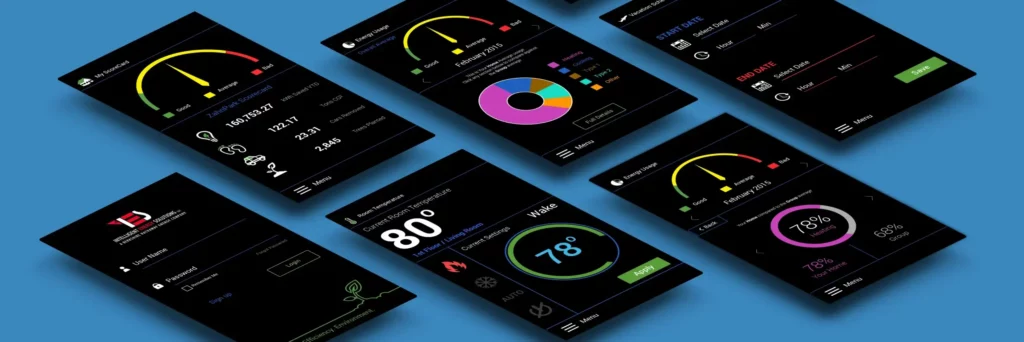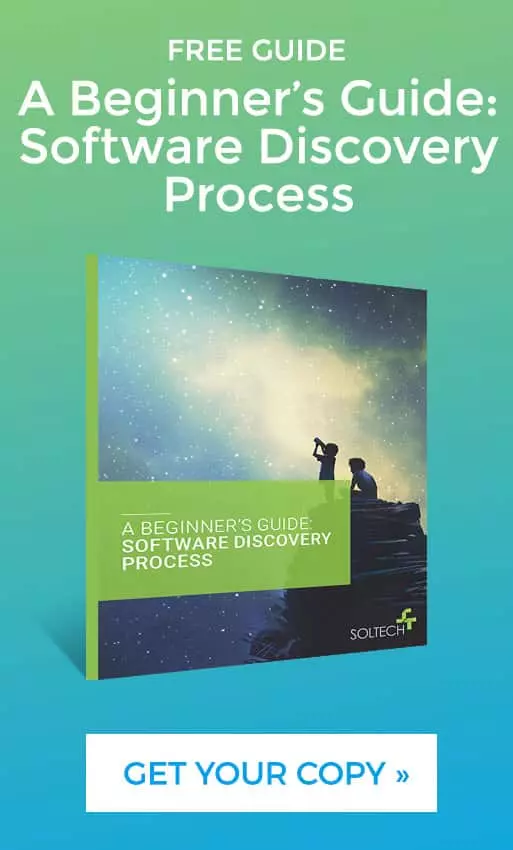
The White Label Software Development Process
By Ann Mooney
Does White Labeling Affect The Design Of Your Software?
Clients often come to us with a software idea that will modernize or even revolutionize the way their industry does business. Once they see the impact that their software will have first-hand, they start to think about offering the software to others in their industry.
To extend the reach of these valuable solutions, our clients will ask us to incorporate white labeling into the product.
If the term “white labeling software” is new to you, the concept is fairly straightforward. By incorporating white labeling into your product, you allow others to use your product as their own.
In other words, white-labeled software looks as though the software is created and owned by your clients — the people and organizations to whom you would sell this solution. That’s true both for their internal staff and their customers.
White-label software development is a great idea when creating a new product. However, what software owners may not realize is that there is a lot more to adding white labeling than meets the eye.
In this article, we give you a behind-the-scenes look at what white-label software design means for a new product. We’ll explain why it is better to consider building white labeling into your product from the start.
White-Label Software Development: Key Design Considerations
With the right strategy, objectives, and development team behind it, custom software can deliver significant value to your company. White-label software can then extend similar value to your clients. That means many more users and use cases must be taken into account in white-label software development.
The goal of white-labeling software is to implement the needed configuration and architecture in your app so that it can:
- Look and feel like it is owned by your client, including their own branding, imagery, and text
- Be configurable and customizable in key areas, allowing it to be adapted to your customer’s needs
- Keep your client’s data separate and secure from other clients
- Be scalable and performant as more and more users access the system
- Be robust, offering adequate business continuity and failover systems
Below we look at these considerations in more depth.
Branding
The first consideration for white-label software development is branding. Important questions that must be addressed in terms of branding include:
- How will you incorporate your client’s logo, font, images, and colors into your product?
- How will these items be set up when a client comes on board?
- Will it be done behind the scenes by your team or through a set-up process that the client goes through and can continue to administer later?
- If it is a web application, how will you handle the URLs so that it appears like the application is hosted by them, not you?
Configuration & Extensibility
Each of your clients will have a unique way of running their business and using your product. To be more “sticky” and to better fit the uniqueness of your clients, you should look beyond branding. How can your product be customized, configured, and extended by other users?
Can clients change reports, or integrate their own third-party services like payment gateways and credit check providers? Will you allow them to modify certain processes or forms to add custom fields so they can track data that is important to them? Can clients build external systems that interact with your product through an Application Programming Interface (API)?
Data Segregation
The third consideration is how to segregate the data of different clients who are on the same system. This is often called a multi-tenant model, as multiple clients occupy the same software application at the same time.
For example, Client A’s data will be stored in the same database as Client B’s and Client C’s data. How do you ensure that Client A can not see Client B’s data and vice versa? It’s a crucial consideration for an effective and secure white-label software product.
When a user logs in, how do you associate their account to Client A vs. B or C?
Tieing a user to a particular client and segregating client data is something that the entire application needs to understand. Below are just a few examples of how an application needs to change to incorporate a multi-tenant model for white-label software development.
- The data model needs to be able to tie each piece of data to a specific client
- The login logic needs to know how to identify which client a user is associated with
- There needs to be branding logic that knows how to display the correct logo, style sheets, images, and text
- Each page or function of the application needs to evaluate the security client-specific security setup for that user and his or her associated groups
- Based on the client, the system should evoke any client-specific customizations whether that be in displaying additional fields, forms, menu items, workflows, etc.
- All available APIs need to request the information that identifies the client so that the responses can be client specific
Security
When you add multiple clients to an application, there are several additional roles and levels of security that your application needs to consider. Depending on the type of application you offer, your clients will likely want different users to have different levels of access.
Clients may need admin users who can configure the product without needing your help. These top-level users can take care of common maintenance tasks for their users like forgotten passwords or enrollment.
Your help desk users may need to access all clients and their user accounts, but not have the same functionality as the users themselves. To better respond to client and/or user help questions, you may consider having functionality where call desk users can “log in” as someone to see what they are seeing, but again have limited capabilities to take action on their account.
You may also want to consider specialized roles and security for super admins, development operations, guests, auditors, company owners, and other important roles. The type of security you offer will depend on your product and the needs of your client.
Once you have defined your system’s security needs, these groups, roles, and permissions will need to be weaved throughout the entire system. That way, each piece of functionality knows how to behave based on the particular functionality and client settings for that user.
Scalability & Robustness
High-performance cars tend to have stronger brakes, more controlled steering, and better aerodynamics to help handle the stress of high-speed driving. The same holds true for your system.
As the number of concurrent users grows, and as the number of data transactions per second increases, your system will need better ways of handling that load. Without the right infrastructure in place, your solution can slow down and create a negative impact for your users.
There are both software and hardware considerations that must be made to build an application that can scale and be robust under load. Most of the design and architecture principles for scale are beyond the scope of this article, but we list a few below to give you an idea.
If your system has reporting capabilities, you will want to consider a data warehouse solution to move your reporting system off of your transactional database. You may want to consider batching some of your heavier processes or implementing a message queue technology like Kinesis. This allows for better parallel processing of high data loads.
You will also want to evaluate your infrastructure and look at the number of servers (virtual or physical), load balancing, hosting in multiple zones, failover, and disaster recovery.
Monitoring your system from both the inside and the outside also becomes increasingly important. It isn’t just enough to know your server is online and your database is online. You need to know if your application is responding the way it should in the timeframe it should, so you can cut off any issues at the pass.
Conclusion
White-labeling software is a great idea when you have a software product that can benefit others in your industry. Your company can earn more revenue while providing real value to your clients.
Although white label software development can be completed after the fact, it is a bit like re-plumbing a house after it has been built.
Each part of the application has to know how it should act differently based on the user and that user’s associated client. Branding, client-specific configuration, and security are all things your application may consider different when it comes to white labeling vs. a program written for your company alone.
In addition, because more users will be on your system and that number may continue to grow, scale is crucial. Your application must be primed to scale and have a robust architecture and infrastructure around it. Approaching a new development project with white labeling in mind from the start makes this complex process that much easier.
If you would like to learn more about white labeling in general or in regard to your specific product, then let us know. We have helped dozens of companies implement white-labeled software solutions both from the start and after the fact.
The 5 Pillars Of A Successful Software Project
We want to help every software project begin on solid ground. In The 5 Pillars Of A Successful Software Project, we share the five essential ingredients of every software project.
You can grab a copy of the guide below and share it with your team!
Ann Mooney
Director of Business Development
Ann joined SOLTECH in 2016, she works directly with SOLTECH’s clients to help find them the best technology solutions for their business. Ann utilizes her strategic leadership and proactive problem-solving skills to continually grow SOLTECH’s business and ensure excellent customer service.
With her years of experience in the technology industry, Ann likes to share her expertise to educate her audience on the enhancement of workplace productivity and growth through software solutions in her articles. Her insights offer advice on important considerations for creating custom software, including initial steps, development costs, and timelines, as well as the advantages of collaborating with a skilled software development team.







